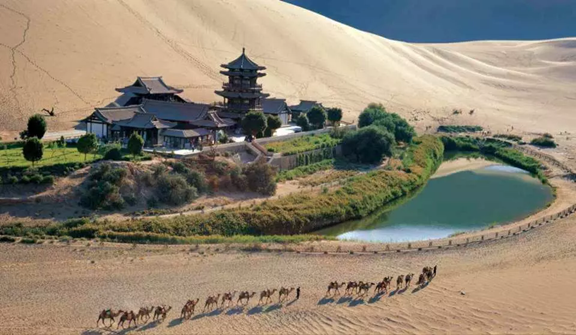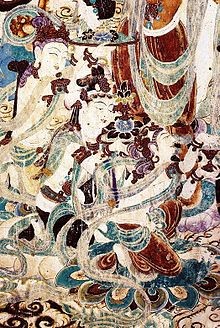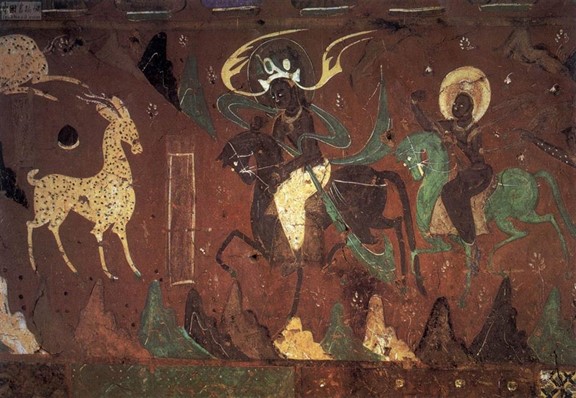What You May Want To Know About Silk Road And Dunhuang Mogao Caves
The Mogao Caves, also referred to as the Thousand Buddha Grottoes or the Caves of the Thousand Buddhas, are a complex of over 500 Buddhist temples located 25 kilometers southeast of the city center of Dunhuang, in the Gansu province of China. Dunhuang is located at the crossroads of religion and culture along the Silk Road and is an oasis of religious and cultural significance.

Dunhuang
Dunhuang was founded as a frontier garrison by the Han Dynasty Emperor Wudi to protect against the Xiongnu invasions in 111 BC. Over time, it grew into a significant gateway to the West and became a hub of commerce and cultural exchange along the Silk Road. Buddhism was one of the many religions that found a home in Dunhuang.
The caves, which are situated near Dunhuang, appear unassuming from the outside but are home to over 50,000 square meters of stunning murals. The caves were created by Chinese Buddhists who, following the example of Indian Buddhists, dug caves into the mountains near Dunhuang in the fourth century as a place for meditation and to house Buddhist statues.
The patrons of the caves also had the interiors painted with religious images and stories, a tradition that continued for over 1,000 years. The early murals at the Mogao Caves reflect the strong influence of Indian and Central Asian art and techniques.
The Mogao Caves, also referred to as the Thousand Buddha Grottoes or the Caves of the Thousand Buddhas, are a complex of over 500 Buddhist temples located 25 kilometers southeast of the city center of Dunhuang, in the Gansu province of China. Dunhuang is located at the crossroads of religion and culture along the Silk Road and is an oasis of religious and cultural significance.
Dunhuang was founded as a frontier garrison by the Han Dynasty Emperor Wudi to protect against the Xiongnu invasions in 111 BC. Over time, it grew into a significant gateway to the West and became a hub of commerce and cultural exchange along the Silk Road. Buddhism was one of the many religions that found a home in Dunhuang.
The caves, which are situated near Dunhuang, appear unassuming from the outside but are home to over 50,000 square meters of stunning murals. The caves were created by Chinese Buddhists who, following the example of Indian Buddhists, dug caves into the mountains near Dunhuang in the fourth century as a place for meditation and to house Buddhist statues.
The patrons of the caves also had the interiors painted with religious images and stories, a tradition that continued for over 1,000 years. The early murals at the Mogao Caves reflect the strong influence of Indian and Central Asian art and techniques.
The art of Dunhuang encompasses more than ten genres, including architecture, sculpture, wall paintings, silk paintings, calligraphy, woodblock printing, embroidery, literature, music, dance, and popular entertainment.

Details of painting of the meeting of Manjusri and Vimalakirti. Cave 159.

Deer King Jataka, Cave No. 257, Northern Wei Dynasty (386–534)
The unique blend of art styles in Dunhuang continues to inspire designers today. The Silk Road Collection by Light Stone is inspired by the art of Dunhuang and incorporates its timeless beauty into daily wear jewelry. The collection is designed to bring good luck and positive energy to those who wear it.
- Company Info
- Feedback
- Customer Reviews
- About Us
- Blogs
- User Center
- Forget Password
- My Orders
- Tracking Order
- My Account
- Register
- Support & Policies
- Shipping & Delivery
- Cancel & Returns
- Customs & Taxes
- Privacy Policy
